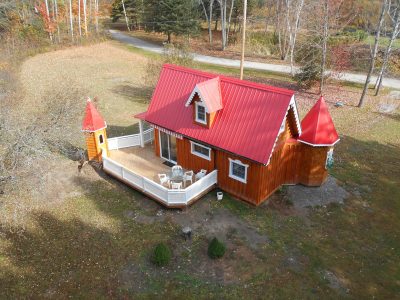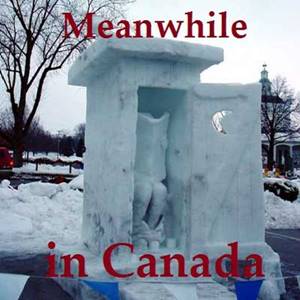LIVE MORE WITH LESS
In these times, this motto has never been more appealing. The world is changing, so are our living requirements No doubt fueled by the restrictions we are experiencing due to the COVID virus, many of us recognise different priorities, and more and more realize that most of us live too high on a hog, in particular if the income stream is getting unsecure and even questionable. Consumerism is curbed, and finally hitting home that we really should not excessively consume the way we do.
Adorable Abodes fitting in all of this perfectly. Inexpensive and small living units, built from mainly natural products.
It’s been a while since I wrote the last blog of the current status of our Adorable Abodes concept.
As many of you know, the model abode is now finally finished, and is available for touring.
We added a wrap-around porch, and boy, this little house looks like a million dollar property now. This is what little things can do. The design concepts are constantly worked on since the requirements are changing.

A few highlights are here:
The construction method has been finalized and concluded to be SIPS only (with the exception of the turrets). The idea of having all modules built in steel cages the way we do has been modified, according to our structural engineer, we have them “overbuilt”, so we do this different now.
Access to the upstairs via a small stairway is in such a small building difficult to achieve, and since we are determined to not use spiral staircases or even ladders, there is the option of adding the staircase outside of the modules, which of course must then be enclosed and within the building envelope.
Status of our intended Community to be:
There are good news, and, at least to some of you, bad news.
Let’s start with the good news: Our proposal is expected to finally meet the stringent requirements by authorities, in particular the Ministry regarding the waste management, which brings with it the expectation of the proposal to be approved. Part of the property has been determined to be suitable to be built upon.
The environmental company which we have hired to determine this has done a good job, so according to their findings we have proposed to build abodes in three clusters or pockets. In each one we will have 6-9 units. While this is not what I had originally proposed, it is at least not a strict “no” on all levels as it was before, and we can look forward to build abodes in those clusters. Surrounded by nature pure and with the two streams running through, this will be a living option to be sought and loved by many. Remember that the density is still exceptionally low. If we use our 50 ac of land and mentally project a density of 3 families/acre, which is generous by today’s standard, this would result in upwards of 150 families or 600 people living here. We will have only a fraction of 600 people living here.
Now, for the bad news: My well announced idea of having the abodes built self sufficient and off-grid cannot be held up any longer. “On-grid” it is. The future oriented ideas of each abode having their own power supply by solar, rain water catch systems for water, composting toilets, gray water management, and others has all been tossed out. Each one of the mentioned, “future oriented” ways of living in nature and getting supplies right from nature, is not legal, according to authorities. So its not in the books. And I mean this literally. It’s not regulated, hence not allowed. This is where we are in society. Technical advances or forward thinking is suppressed. All these ideas cannot be realized, not because of technical reasons, but simply, they are not allowed to build. End of story.
The underlying reasons for building as originally proposed are obvious. All of the systems introduced are focused on living in harmony with nature. As a pleasant side effect, it is much cheaper, too.
Alas, not so.

Here are some more details:
Water Supply
The water supply via rain water catch systems and holding tanks as for example in-ground cisterns is not very well liked by the authorities, so even with sophisticated filtration systems like reverse osmosis systems and other filter methods like charcoal or UV-treatments, we are too far ahead in the future. So it must be done the standard way, via wells. Of course, plus above filtration systems.
So much for trying to save $ 15-20,000 per abode. We are now striving to have one common well per cluster. I hope this will be allowed.
Application of composting toilets and gray water usage.
Here again, future oriented waste removal is not what authorities want to see.
As opposed to any new and proven better ways of dealing with human waste, these are not sufficiently understood by authorities, hence not regulated and as a result, not allowed. Period.
We have to have septic systems. These are well understood and highly regulated, and needless to say, are the most expensive part of the infrastructure next to the construction of the road ways, which must be provided. So much for saving $ 25,000 per abode, never mind the waste of land, and the requirement to have an insane amount of gravel to be trucked in.
About the power supply and road access I will have a bit to say in the next blog, so stay tuned in.
To summarize, all three clusters will be built up with services provided as you are used to.
As proposed, we are still allowed and able to have the land in common ownership so at least there is no expensive subdividing and subsequently the cost of individual lots.
There will be a monthly user fee for the lot, by means of a land lease fee, which will include the shared cost of all common elements which have to be installed. Still a lot less expensive than a subdivided lot. The abodes can either be built stationary onsite or in modular fashion, so they could be uninstalled and moved if the purchaser intends to do so.
Update on expected time of approval
No surprise, the intended date for approval of our land is delayed again.
While we have finalized and presented the concept plan, there are still hiccups and more tests and reporting to be done. The last delay stems from the Ministry’s request to determine ground water flow and direction of flow for final sizing and location of the septic fields. We hope to get approved midsummer 2021.
Speaking of septic, and since we are on this subject, I would like to make a few comments for folks who are trying to live REALLY inexpensive.
Consider this:
The dealing with human waste in a commonly build (rural) house is an expense nobody really gives a second thought. That is because there are no alternatives allowed. Considering the cost of a septic field and the cost of one or more bathrooms, including plumbing, if we were to break this cost out mentally, the price of it or them would be in the range of $ 60,000 for a regular house, give or take.
If we were to use a composting toilet and an outhouse, the cost is close to zero. Of course, nobody wants to use an outhouse nowadays, but what is happening here? Why is it not possible to seek solutions pricewise somewhere in between?
Well, as you see from my comment in the last paragraph, obviously there is no in-between. The surprising fact is, that it is absolutely possible to achieve such an in-between, if this matter is given some more thought. One thought I present below. But I warn you, it requires a complete make-over of today’s thinking. And of course, this is only for folks who have their own land and want to build upon:
There is the option of a holding tank.
This is allowable as a temporarily means of storing waste water, so yes, there is a snag.
As such, and if the application is done in today’s ways of using water, a necessary pump out has to be done every few weeks, hence, this is an expensive undertaking – one would think.
However, considering the installation of a (quite expensive) septic tank/field versus a holding tank including the cost of the pump outs, if one does the math it may come to a surprise to learn that the holding tank wins hands down.
But it gets better than this:
Moderation in water usage/waste is the key.
Above statement is true for the water usage we are accustomed to.

As we are now more and more aware of our environmental footprint, if we were to re-condition ourselves to the following hints, the interval of pump outs can be drastically increased, to the extent that the application of a holding tank really shines.
Consider this:
- Application of 2 l/min shower heads. (In Germany, way back then in the sixties, we had 1 l/min shower heads, which I never seen here. With those, I remember as a youngster, we would shower only in a mist of water – well, we don’t have to go that far and overdo it)
- Application of low water flush toilets(6 l/flush max)
- Flush only after several times of peeing, not after every pee.
- For dishwashing. Use heated water (surprise, surprise, many folks use cold water), about 1 inch in the sink and use sparingly bio detergent. Collect dishes in small basket, and rinse the content of the basket, do not rinse each piece of cutlery. By the time you are done, you have used less than 10 l/dishwashing.
- Laundry:
No laundry. As will be practiced in our community, laundry will be done onsite in a common wash house, but not in the abodes.
Absolute no-nos are flushing away anything which you would like to see gone, but are better off by other means of disposal, such as paint, chemicals and much more, the list is much longer than I like to bore you with here.
- Needless to say, there will be a filter installed before the grey waste water enters the tank. This will stop or minimize soap/scum/hair etc. to enter the tank.
Voila, not going into the math details, but the result is that the cost break-even point is somewhere in the range of 50-60 years, before the septic field is cost wise more efficient.
In 50 or 60 years you may be done pooping anyways.
End of comments.
Whew, glad to have that out of the way.
We are now in a position to get serious about folks who want an abode built and to decide to live at Beaver Pond Village. Unlike todays cluster housing, we envision a more close-nit community with community gardens, and much more.
We are taking orders now for abodes and accept deposits (held in trust by a lawyer) to hold space.
In the north cluster, that is the one closest to Goodrich Rd., we intend to build a multi-unit abode, and have already folks requesting holds of individual units. Prices are still in the works, but should be in the range of $ 120-150k at the time of this writing.

The other 2 clusters will have individual adorable abodes, which are either like “Avondale”, or smaller as in “Speedwell”, see tab “designs” on our web page www.adorableabodes.ca
It is also possible to add another module to “Avondale” for more space.
Enclosed some updated pictures of what the model abode “Avondale” looks like today, after that fancy porch is added on. And here is a link of the virtual tour to see it inside.
Enjoy.
As before, I am ready to answer your questions and offer tours (observing Covid restrictions)
Looking forward in hearing from you.



